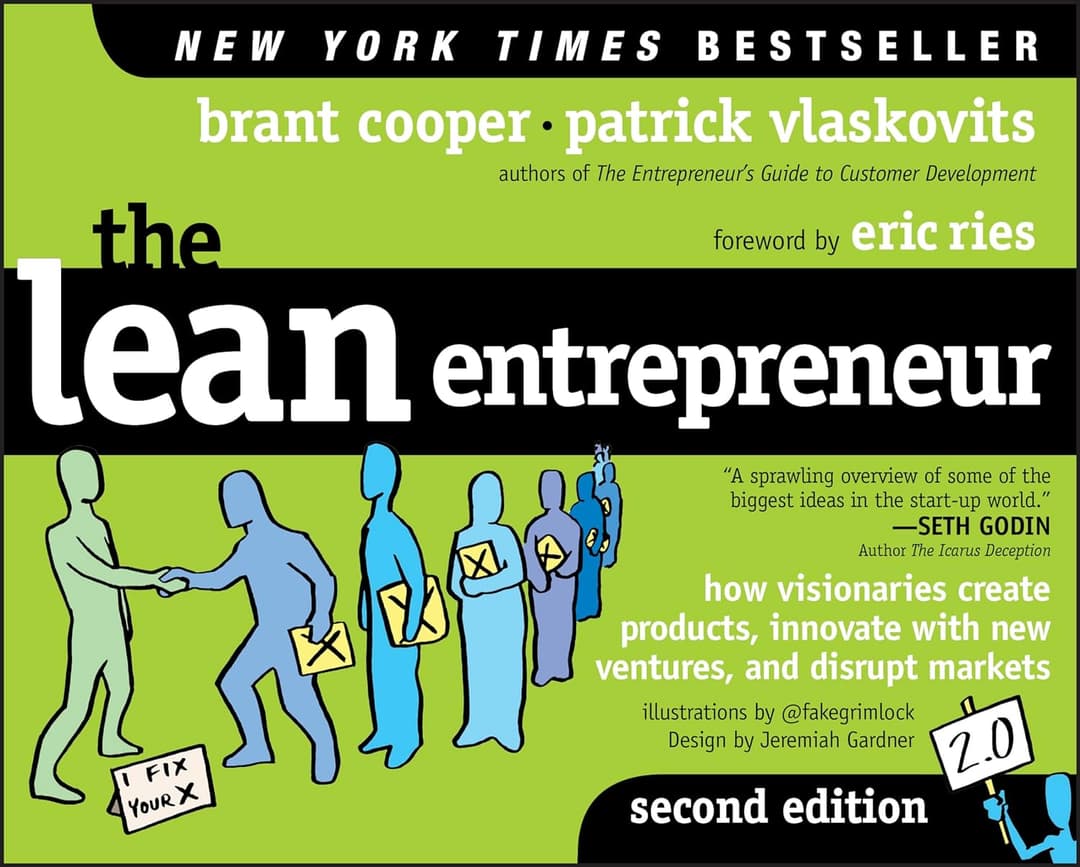
The Lean Entrepreneur
By: Brant Cooper
Category: Entrepreneurship
Finished:
Highlights
“The best way to navigate the near future is to hyperfocus on creating value for customers and moving at the speed of the Internet.”
“Waste in a lean startup are those activities that do not produce learning.”
“Don’t follow your passions; follow your effort. It will lead you to your passions and to success. Where we all want to get to is what drives you to do the things you do. What motivates you to work on a particular project?”
“A learning organization puts data before rhetoric, testing before executing, customers before business plan. It runs experiments to reduce risk, uses data to resolve conflicts, and interacts with customers to understand them deeply.”
“Lean startups use three primary methods of testing the validity of their assumptions:
- Customer interaction.
- Running experiments.
- Analyzing data.” ““The real measure of success is the number of experiments that can be crowded into 24 hours.” —Thomas Alva Edison” “Investor Paul Graham says: “[ launch] when there is at least some set of users who would be excited to hear about it, because they can now do something they couldn’t do before.””
“Regardless of what you might think, the biggest obstacle to your idea is that no one cares.”
“Generally, customers will only share products with others if they’re passionate about them.”
“To build a successful business, you must learn several things: What problem or passion to address. What solution to provide. For whom to provide it, segment by segment. How to market to the segment. How to sell to the segment. How to turn a customer into an advocate. How to scale a segment. How to innovate again.”
Job 1: Is There a Solvable Problem?
- Leave the comfort of your home and go find one person who is emotional about the pain or passion you are addressing.
- If you are a B2C play, find nine more to complete your LE Team of 10.
- If you are a B2B play, find two more to form your LE Advisory Board.
- If you are creating a multi-sided marketplace, serve both sides.
- Look for patterns in the people you compile.
Job 2: Is the Solution Tenable?
- Additionally, qualify your LE Team of 10 or LE Advisory Board.
- Find 10 (3) people who are excited about your high-level solution idea.
- If necessary, fill out your “team of 10” (Advisory Board) with new blood (starting from the beginning).
- What is the pattern?
Job 3: Solution Discussions
- Engage your LE Team of 10 or LE Advisory Board during product development.
- Are you on the right track?
- Is the customer on right platform?
- Perform usability testing with competitive products.
- Conduct a “high hurdle” experiment.
- If responses are lukewarm or uninterested:
- Change the solution.
- Change the segment (start over).
Job 4: Viability Testing
- What is most uncertain about your business model?
- Run purpose-built tests to resolve uncertainty:
- Landing page
- Concierge
- Wizard of Oz
- Prototypes
- Wireframes, mockups, similar products
- Test apps
- If you lose advisory board members, refill
Job 5: Minimum Viable Product
- Validate customer will do in product what they’ve said they’d do.
- Iterate.
- Develop discrete functionality that addresses the pain/ passion.
- Iterate.
- Validate through customer use.
- Iterate.
- Perform usability testing.
- Iterate.
- If you lose members of the Team of 10 or Advisory Board, refill.
Job 6: Post-MVP
- As you learn, split off execution:
- Learn “activated”; build toward “satisfied.”
- Learn “satisfied”; build toward “passionate.”
- Build toward “whole product.”
- Developers should have the guts not to develop.
- If Team of 10 or Advisory Board members are not passionate, refill.
- What is the pattern?
- Turn your Team of 10 (3) into a team of 20 (6).
- Learn “passionate”; increase speed of customer acquisition.
- Create cross-functional teams charged with achieving specific objectives based on data that moves the needle of the business.
Job 7: Funnel Vision
- Use insights from your team of 20 (6) to:
- Validate where customer segment “hangs out.”
- Validate that you can reach them.
- Validate what messaging and positioning resonates.
- Validate what makes customer trust you.
- Validate what convinces customer to buy.
- Re-segment existing customers based on combination of:
- pain
- origin
- value (revenue)
- funnel
- product usage patterns
Job 8: Minimum Viable Business
- Lifetime value > cost of acquisition
- Velocity: average revenue per user versus cost of acquisition
- Word-of-mouth: viral coefficient
- Acquisition channel viability
- Discovery of “shadow force”
Job 9: Long-Term Growth
- Execution + continuous improvement + continuous learning
- Continuous improvement of “shadow force”
- Resell, cross-sell, up-sell
- New products for existing customer segments
- Existing products for new customer segments
- Disruption: new products, new customer segments

